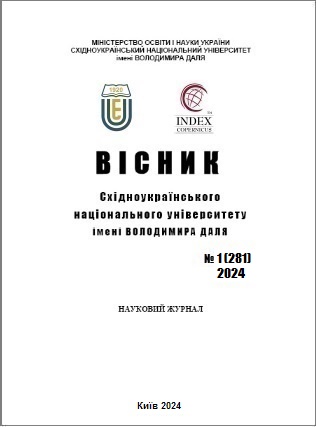Рractical skills in using the AUTOCAD graphic editor in the educational process
DOI:
https://doi.org/10.33216/1998-7927-2024-281-1-85-90Keywords:
graphic disciplines, drawing, computer graphics, AutoCAD graphic editorAbstract
The article considers the possibilities of using the AutoCAD graphic editor in the formation of the readiness of technical university graduates for graphic activities. Examples of solving educational tasks in the main sections of the discipline «Engineering and Computer Graphics» are given: projection, mechanical engineering drawing, which allows students to acquire a wide range of graphic competencies in demand in the professional activities of an engineer. Computer and engineering graphics play an important role in the training of specialists with technical education. The ability to read and execute a drawing is a prerequisite for successful work in production. Therefore, the purpose of studying this discipline is to master the knowledge, skills and abilities to read drawings, using knowledge and skills in further education and future professional activities. While studying the subject, students get acquainted with the rules for drawing up a drawing according to the Unified design documentation system and the types of design documentation. A drawing is a graphic means of expressing the ideas of a designer or constructor, and even the main production document used to manufacture machines, mechanisms and its components, and even to design various schemes. The discipline «Engineering and Computer Graphics» provides theoretical knowledge and practical skills for making and reading product drawings. It contributes to the development of spatial imagination, which is very necessary for an engineer in his creative work. A drawing of an object consists of a set of two or more interrelated images made according to the rules of rectangular design, as well as in compliance with the rules and conventions set out in the Unified design documentation system and other special standards. A drawing should be as visual and reversible as possible, i.e., it should allow you to accurately reproduce the shape and size of the object, and be easy to construct. The methods of constructing images of objects by the design method studied in engineering graphics allow you to create spatial images of objects from a drawing, determine their relative position and size, explore and model various technical forms and structures. Engineering graphics develops spatial thinking with geometric images, which is necessary for the professional activity of an engineer in solving various technical problems, making and reading drawings. Engineering graphics becomes especially important when switching to computer modeling and automated execution of drawings, since the software is based on theoretical positions, concepts, and methods of solving various problems that are studied exclusively in engineering graphics.
References
1. Тимченко А. А. Основи системного проєктування та системного аналізу складних об’єктів: Основи САПР та системного проєктування складних об’єктів: Підручник за ред. В. І. Бикова. 2-ге вид. К.: Либідь, 2003. 272 с.
2. Карпюк Л. В., Гуліда М. І., Ревенко С. А. Комп’ютерна графіка в машинобудівних кресленнях: навч. посібник. Луганськ : Вид-во СНУ ім. В. Даля, 2007. 132 с.
3. Ревенко С. А., Карпюк Л. В., Гуліда М. І., Архипов О. Г. Комп’ютерна графіка в хімічному апаратобудуванні: навч. Посібник. Луганськ : Вид-во СНУ ім. В. Даля, 2012. 400 с.
4. Ткаченко В. П., Тищенко Ю. А., Суховерхов В. К. Нарисна геометрія: навч. посібник. Луганськ : СНУ ім. В. Даля, 2004. 192 с.
5. Karpyuk L. V., Davydenko N. O. Modeling in AutoCAD for bachelors. BicникСхідноукр. нац. ун-туім. В. Даля. 2020. № 1 (265). С. 25-28.

